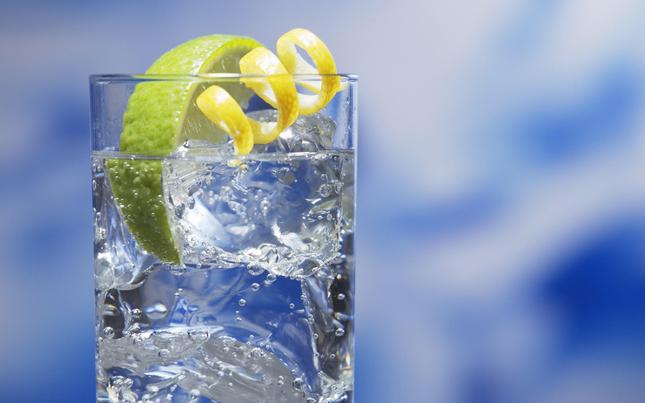Summertime Refresher: Gin and Tonic
By • August 17, 2015 0 1236

The dog days of summer are upon us, and in Washington that means days hotter than two native black squirrels making love in a wool sock. So what’s one to do when the temperatures are hot as hell and the air is thick as a sauna?
My solution is to head to the pool with a refreshing cocktail in hand.
One of my favorite poolside elixirs is one of the simplest: a timeless gin and tonic with garnish. After all, there is a reason why July is known as Gin & Tonic Month.
While this may sound boring to some, nowadays there is a wide variety of gin styles and flavor profiles available in your local spirits store. You could spend the rest of the summer mixing G&Ts without a dull moment.
First, let’s talk a little about gin, which is essentially a spirit distilled from juniper berries. This gives it its signature “piney” flavor.
Gin started off as an herbal medicine in Holland, where it was known as genever (the Dutch word for juniper). Genever, which is being sold again, had a sweeter flavor and a darker color than the gin we know, because it had a high percentage of malt wine.
When Dutch Prince William of Orange and his wife, Mary, became King William III and Queen Mary II of England, Scotland and Ireland, they brought gin with them. However, the British tempered the sweet taste of the gin, creating the style known today as London or dry gin.
In the 1700s, the British government allowed the unlicensed production of gin. Very cheap, it became wildly popular, sparking a period of history known as “gin madness.”
The gin and tonic came about when British colonists in tropical areas, such as India and Africa, took a daily dose of quinine to prevent malaria. At that time, tonic water contained a high level of quinine. The gin masked the bitter taste.
Gin became popular in America during Prohibition, when bootleggers figured out they could make a cheap version by mixing grain alcohol with other flavors in a large vat (hence the term “bathtub gin”).
Today, gin has morphed into an artisanal spirit. Distillers experiment with different botanicals, such as cucumber, orange peel, elderflower, almonds and poppy. These gins have a less prominent juniper flavor, which is what many folks dislike about the spirit.
One of my favorite “neo-gins” is Bluecoat. Hailing from Philadelphia, it has soft and earthy juniper notes, finishing with a citrus twang. It also has a slight hint of coriander. This is my go-to for a G&T.
Arguably the most popular of the new gins is Hendrick’s. Its cucumber notes took the sprits world by storm a few years ago. Even traditional gin makers have jumped on this bandwagon. Tanqueray now produces Tanqueray No. Ten, with hints of grapefruit and orange, and Rangpur, with the essence of lime.
Whatever your style, there is likely to be a gin to go with it. If you’re a classicist, stick with a traditional dry gin, like Bombay. If want a slight twist, try Old Tom, which is a little more full-bodied with a tinge of sweetness. If you’re a retro person, mix it up with Bols Genever. For the truly adventuresome: Why not enjoy the season sampling as many as you can?
You may also want to experiment with gourmet tonic waters such as Q or Fever Tree. And don’t limit yourself to the typical lime garnish. Use your imagination and pick a fruit or a spice that will compliment your superb choice of spirit: cucumber, berries, thyme, blood orange, ginger root, a sprig of mint…
Jody’s Gin & Tonic
3 ounces Bluecoat gin
5 ounces Q tonic
Garnish with an orange wheel and serve
in a collins glass.

